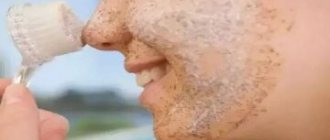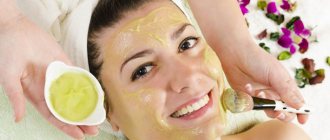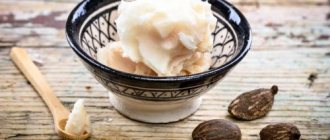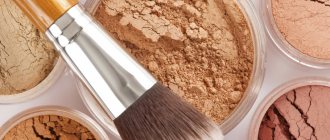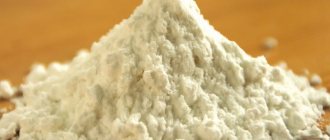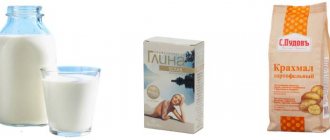Human skin is his exclusive natural outfit. And any outfit needs to be taken care of. The skin must be protected a hundredfold. After all, it is given to a person once and for life. In the previous article we talked about the structure of the skin and its functions. Today we’ll talk about how to extend its longevity. If you want your face and body to always shine with health and beauty, you need to learn how to properly care for it. And to do this, it is necessary to determine the characteristics of the skin, or rather its type, and only then buy cosmetics for its care.
Skin types, condition and proper care for it
Just as you can tell the condition of the skin of the whole body by looking at the skin of your face, let’s look at its features in more detail. First, let's cleanse our face well of dirt and cosmetics. To do this, wash with soap. If after this there is a feeling of tightness on the face, the skin is dry and shiny, then it is dry.
If the skin is elastic, smooth, elastic - it is normal.
For the final determination, let your face rest for a couple of hours. And then blot certain areas of your face with a dry cloth. If the napkin becomes greasy, then the skin in this area is oily; if not, the skin is dry.
What determines the condition and color of the skin?
Elasticity, freshness, color and other characteristics of the face depend on the structure and condition of all layers. So the pigment melanin, which responds to dark color and tan, is formed and accumulates in the epidermis. There are also pores here that bring sweat, impurities and toxins to the surface.
The intercellular fluid in the upper rows of cells is represented by ceramides, cholesterol and fatty acids, which are responsible for skin type. Thus, the predominance of fatty acids and cholesterol makes the surface of the face oily, and a low concentration of ceramides makes it dry and flaky. The correct balance of intercellular fluid components makes the face beautiful and elastic. This balance can be achieved with the help of special creams and serums, as well as cosmetic procedures.
Tone and elasticity are provided by collagen fibers and hyaluronic acid located in the dermis. It has a whole network of collagen, the integrity and elasticity of which is responsible for youth. Hyaluronic acid is a polysaccharide that fills the space between collagen fibers. Its main task is to bind liquid and prevent evaporation. After the discovery of this substance, cosmetic brands began to include it in anti-aging and moisturizing face and body care products.
A competent cosmetologist, knowing the structure of facial skin, can determine in which layer the problem is localized and what needs to be done to eliminate it. But individual characteristics are also important here. Some people, due to hereditary factors, have thin and pale skin, others have rough and dense skin, and others are prone to oiliness and acne. Cosmetology is a science that still has a lot to discover, and the starting point is the structure of the skin.
Oily skin, features and care
Oily skin is always oily and shiny. There is a thick layer of sebum on it. Its pores are enlarged and well opened, so it is most often covered with small acne eruptions. Oily skin is more susceptible to dust and dirt than dry skin. Water is very useful for it, so the ideal way to clean it is to wash it with regular soap, soap cream, cleansing briquettes, and non-greasy cleansing lotions.
In the morning, it is useful to wash your face with boiled water using special soap for oily skin, for example, Safeguard soap. It is good to wipe your face with a piece of ice with various healing additives. Eau de toilette is very refreshing for oily skin. To do this, apply a moistened swab to the skin of the face with very light movements, then apply a nourishing cream. When choosing a face cream, carefully study its instructions and the level of fat content (bold or semi-bold). To prevent acne, deep cleanse your face once a week using a steam bath and nourishing masks.
Moisturizing masks for dry skin
Excellent care products for dry skin types are homemade masks that have moisturizing and nourishing properties.
- Berry mask with oatmeal. In one art. spoon of oatmeal, add one teaspoon of lanolin, previously melted in a water bath and 3-4 tbsp. spoons of fresh berry juice from strawberries or cherries. Stir the resulting mass well and apply to the face for 10-15 minutes, then rinse with warm water.
- Melon and plum mask. Mix plum pulp (without skin), melon pulp and any vegetable oil in equal proportions. Apply the composition to your face for 15-20 minutes, and then rinse off.
- Mask with egg yolk and chamomile extract. Grind the egg yolk with 1 teaspoon of vegetable oil. Add 1 teaspoon of chamomile extract drop by drop into the resulting mixture. Apply a thin layer of the mask to your face for 15 minutes. Rinse with weakly brewed tea at room temperature.
- Apple mask with sour cream. Mix the pulp of a small apple with 1 teaspoon of sour cream. Apply the resulting mixture to your face for 20 minutes and then wash with warm water.
- Mask with honey and cottage cheese. One tbsp. Mix a spoonful of cottage cheese until smooth with two tbsp. spoons of honey, melted in a water bath. Apply the resulting mask to your face for 20 minutes, and then rinse with warm water.
- Yolk mask with lemon juice. Grind the yolk with half a teaspoon of olive oil. Add 5 drops of lemon juice to the mixture. Apply to face for 20 minutes. Rinse with water.
- Cucumber mask. Mix cucumber pulp with warm milk. Apply to face, rinse with warm water.
- Aloe mask. Two tbsp. Mix spoons of heated honey with one tbsp. spoon of aloe juice. Apply to face for 15 minutes. Rinse off with warm water.
- Fruit mask with egg yolk. Grind one egg yolk, add one tbsp. a spoonful of juice squeezed from any sweet fruit (sweet apples, pears, grapes, bananas, melon, etc.) or cucumber juice, add half a tbsp to the mixture. spoons of sour cream and one teaspoon of vegetable oil. To make the mass thicker, you can add bread crumb or barley flour. Apply the composition to the face for 15-20 minutes. Afterwards, rinse with lukewarm water.
You may also be interested in:
Dry skin, features and care
Dry skin has a pale, yellow-pink color due to an insufficient number of blood vessels. She is thin, sluggish, without acne or pimples. It quickly becomes weathered, flakes, becomes irritated, lacks shine, quickly loses firmness and elasticity, and wrinkles appear early on such skin. It is characterized by increased sensitivity to various adverse effects. The way the sebaceous glands work weakly. The skin is dehydrated due to insufficient oil. Therefore, dry skin needs careful and proper care to prevent wrinkles from appearing prematurely. For washing, you should use boiled, preferably purified water, or softened with borax. It is necessary to do without soap and eau de toilette containing alcohol. Instead of soap, use oatmeal or almond flour. It is necessary to cleanse the skin with a cream; the skin will absorb the required amount in 10 minutes, and to prevent excess oil from clogging the pores, remove the remainder with rose water or herbal tincture.
In the morning, cleanse your face and neck with liquid cream, olive or vegetable oil, or you can use special toilet milk. Then wipe your face with a tonic infusion of marshmallow root, linden blossom, and flaxseed. Apply cream to damp skin; after 15 minutes, remove excess cream with a paper napkin.
In the evening, cleanse your face with cream or cosmetic milk. After cleansing the skin, apply a rich, vitamin-containing, nourishing cream.
Make moisturizing, nourishing and masks at least twice a week.
Skin types. Cosmetological classification
In cosmetology, the following skin types are distinguished: - normal - oily - dry - sensitive - combination Normal - children under 10 years old. Clean, fresh, taut, elastic, without flaking. It has a pink tint due to uniform blood supply. Smooth and elastic to the touch. Contains sufficient moisture and grease. Pores are almost invisible on it, there are no blackheads or wrinkles. Oily - characterized by excessive shine due to greasiness and insufficient blood supply. Excess oil clogs pores. The skin is prone to acne, pimples, and has a dirty appearance. The pores are sharply enlarged. There are open and closed comedones. Rough, exacerbation before the menstrual cycle. Oily skin stays young for a long time. By the age of 30-35, the transition is closer to normal/combined. Dry - has a different origin and appearance. In young and middle age, dry skin can be natural. The skin is thin, delicate, with a matte finish. Pores are invisible. Small, fine wrinkles appear early. In the absence of special care, it peels off, tightens, and becomes irritated. Combined - characterized by uneven distribution of fatty lubricant in different parts of the face. Usually the T-zone is oily, shiny, acne-prone. Eyelids, cheek - dry. There may be wrinkles and peeling. The first signs of withering are at 28-30 years old. By the age of 50, age-related changes are pronounced, ptosis of the oval, eyelids, nasolabial folds. Sensitive – Dry skin may be prone to sensitivity. Allergic reactions, rosacea, especially often irritated, a feeling of discomfort appears after contact with cold water. Reacts to temperature changes, does not tolerate cosmetics with a large number of fragrances and preservatives.
12 skin types
Type 1 is normal, with good tone. The surface of the skin is matte, with a slight shine in the T-zone. The pores are small and often pronounced. The skin is elastic, without wrinkles. Tolerates soap, ultraviolet light and other irritants well. Without proper care, wrinkles appear by the age of 35-40. Transitions into type 2. Type 2 is normal, somewhat flabby. There are facial wrinkles, crow's feet, the skin of the eyelids is weakening, and mild ptosis of the upper eyelid. By the age of 45-50 it becomes type 3, type 3 flabby. small facial wrinkles and folds form spontaneously in places where the skin sagging. Type 4 dry, good tone. Without care, it quickly turns into type 5. Type 5 is dry, somewhat flabby. Pronounced nasolabial folds. Typical for people aged 30, without care it quickly turns into type 6. Type 6 is dry with increased sagging. Characteristic from 40-45 years old is type 7, oily, sensitive, good tone, hyperkeratosis. The pores are pronounced, filled, there are comedones. Typical for 18-30 years old. Acne is typical during puberty. Doesn't tolerate cosmetics well. By the age of 30, flabbiness appears, transition to group 8. Type 8: oily, sensitive, with sagging. By the age of 30-40 it becomes type 9. Type 9 is oily, very sensitive with high sagging, large pores, rosacea. Type 10 is oily with good tone. Rough, greasy, oily. The pores are enlarged and empty. The skin is stretched, has the appearance of a sponge. Type 11 is oily, somewhat flabby, the pores are enlarged.
Type 12: oily, flabby, rough, wide empty pores, spontaneous folds. Typical for 50-60 years old.
Marina Kazarina
Cosmetologist, expert in the field of corneotherapy
When copying material in full or in part, a direct link to the article is required
Normal skin, features and care
Normal skin is pleasant skin with a beige-pink undertone. Smooth, fresh, tightly stretched, clean, velvety, elastic. Has many blood vessels. Without acne, pimples and blackheads.
To clean it, warm water and simple soap, without alkali, are enough. You can replace soap with wheat bran. After washing your face, rinse your face with cold water and a small amount of borax. You need to cleanse your skin 2 times a day. Then wipe your face with eau de toilette, herbal infusion or lotion. They have an antiseptic, anti-inflammatory, astringent effect, and tone the skin well.
In the morning, wash your face with plain, clean water and soap or bran. Lightly apply the cream to still damp skin. It will protect the skin from wind, dust, and sun.
In the evening, remove makeup with cleansing milk, then wash your face well with soap, then wipe your skin with lotion and apply a toning cream to soften the skin. If you use powder in the morning, apply a moisturizer.
Make a nourishing mask once a week. Before applying it, first wash your face and then take a steam bath or compress to open the pores well.
Cosmetics
Hand care should be daily and regular. Cosmetics should be chosen with the desired directional action. And only if these conditions are met, aging can be prevented and the skin on your hands will be in perfect condition. Care should be comprehensive, and this involves the use of the following cosmetics:
- detergents and disinfectants;
- nourishing and moisturizing;
- massage
There are very few sebaceous glands in the skin of the hands. Therefore, by nourishing and moisturizing it, you can maintain elasticity and firmness. Avoid wrinkles for longer. Massage will help get rid of them, and properly selected detergents and disinfectants will prevent the appearance of inflamed areas and the appearance of fungus.
Disinfectants
Disinfectants contain antiseptics. These active components destroy pathogens on the surface of the skin and prevent their reproduction.
Such cosmetics must contain alcohol, propylene glycol or other antiseptic. True, there are products without alcohol or with minimal alcohol content. They are intended for dry and sensitive skin. In addition, manufacturers add glycerin, herbal extracts, vitamins, and oils to mild disinfectants. Disinfectants can be in the form of spray, soap, wipes, gel.
Gels
Bath and Body Works (USA). "Aloe-ha." Antibacterial disinfectant. It may happen that there is no water on the road. Then you can use this effective gel, which destroys up to 99% of bacteria. It's easy to use. Simply apply a small amount onto your palms and rub gently. In addition to the active antibacterial substance, it contains aloe vera and vitamin E.
After application, there is a stickiness that disappears quickly.
Vitex (Belarus) “Ideal hands”. The product contains: ethanol, glycerin, aloe leaf juice, crosspolymer, triethanolamine. To disinfect your hands, you need to rub a drop of the gel in your palms. Do not apply to open cuts or wounds.
Cost: from 69 to 89 rub.
Spray
- Faberlic (Russia). Hand spray gel with prebiotics. These components effectively resist bacteria and cleanse the surface of the hands from them. Monarda oil soothes the dermis. And allantoin softens it.
- Emital. Protect. The product contains: 70% alcohol, glycerin, herbal extracts, salicylic acid.
On the road, where there is no water, gels, sprays and wipes are suitable for hand disinfection. You can use soap at home. Among the most popular brands are Dettol and Safeguard.
The human body contains about 500 “friendly” and beneficial bacteria. Safeguard soap destroys them too.
Cleansing
The healthy appearance of the skin on your hands is very dependent on cleansing.
Many harmful microorganisms, plant spores, and dust accumulate on the surface of the dermis. They can cause an inflammatory process. Soap is the main cleanser. It can be liquid, bar or other types. Liquid soap is the most popular. Firstly, bacteria do not accumulate on its surface. And secondly, manufacturers, in addition to detergent components, add ingredients that nourish and moisturize the skin. And therefore they protect it from premature aging. If cracks appear on your hands and the skin is inflamed, then cleansers that contain glycerin, sulfur, and calendula are recommended. But soaps with the addition of vitamins and natural oils nourish the skin. For those who are sensitive to peeling and inflammation, a cleanser containing string or lavender is suitable.
Liquid soap
Oriflame (Sweden) “Olive and Aloe”. Liquid soap containing natural olive oil, aloe vera, glycerin. Therefore, the product not only cleanses the skin of the hands, but also softens it and moisturizes it.
Paglieri (Italy). "Aloe vera and lilac." Gently cleanses the epidermis. Nourishes and moisturizes it. This is facilitated by the active ingredients: almonds, rice and oats. It is the milk from the fruits of these plants that will help you forget about peeling and the feeling of tightness of the skin.
Ziaja (Poland). Liquid soap from a Polish manufacturer nourishes the skin well, makes it elastic, eliminates peeling and irritation. The skin becomes soft, tender, wrinkles disappear. As an example, soap with moisturizing cream is “Moringa with Coconut”.
Approximate cost: 670 RUR
Bar soap
Duru (Türkiye). The soap is packaged both in individual packs and several per pack. They have different scents: green tea, lily of the valley, almond, rose, tropical fruit and others. Each block contains moisturizing cream and therefore the skin is not only cleansed, but also well moisturized.
Each episode is a pleasant discovery for women:
- Fresh – will envelop you in the aroma of cherries and fruits;
- Gourmet - the smell of blueberries and ripe juicy cherries;
- Nature's Treasures. Protects the skin of your hands from drying out, as it contains glycerin, vitamins and herbal extracts.
Dove (Germany). Many lines with different scents. For example, “Embrace of Tenderness.” Tones, softens, nourishes, cleanses, moisturizes and all thanks to the presence of glycerin and shea butter.
Natural hand detergents produced by Ceano Cosmetics (Latvia) perform their functions well. For example, "Melon". Soap containing natural ingredients: cold-pressed olive oil, grape seed oil, cocoa, jojoba, coconut, almond, avocado, rose. As well as glycerin, coenzyme Q10, microelements. The product cleanses the skin and moisturizes it perfectly.
It is better to wash your hands with warm water and immediately dry them with a soft towel made of natural fibers.
Sanitary napkins clean your hands well if you can’t wash them.
For massage
All massage products are needed to ensure that the hands glide well over the body and arms and do not cause any discomfort with these movements. When choosing creams or oils for massage, you should pay attention to the content of mineral ingredients and parabens. If there are such things there, then it is better not to buy the product. Among the popular cosmetics for massage procedures are creams and oils. Creams are thicker and are consumed more slowly than oils. But their naturalness speaks in favor of the latter:
Cream
- Cream "Soothing Touch". Delicate consistency, without any ingredients harmful to the skin. Suitable for sensitive and problematic skin.
- Biotone cream oil. Contains ivy and arnica extract. They strengthen small vessels and improve blood flow. The consistency is light, non-greasy, similar to a soufflé.
Oil
- Greenland (Netherlands). "Apple". The cosmetic product is classified as natural. It contains organic acids, B vitamins, keratin, fiber, microelements, and proteins. The oil works at the cellular level, regenerates cells, improves blood circulation.
- Madara Cosmetics (Latvia). Butter with cocoa and plum. Nourishes, moisturizes, soothes the skin. You can use this massage product from the age of three, as it is natural and does not contain harmful components. Delicate texture ideal for massage.
The oil or cream should be at a comfortable temperature. Before the massage, they need to be warmed up in your palms.
Anti-aging
The first signs of aging can be seen on the skin of the hands. They are the ones who are constantly in contact with various chemical detergents. Temperature changes also affect their condition. And since there are few sebaceous glands in the epidermis, its cells begin to age earlier. Hands show age. In addition, microcracks appear on flaky dry skin, through which harmful microorganisms penetrate. The skin must be kept in good shape by constantly moisturizing it. Regularly and daily.
Many manufacturers produce care cosmetics not only for the face, but also for the hands:
- Floralis (Belarus). Active moisturizing cream for dry skin of hands “I kiss your hands.” Restores the elasticity of the skin, nourishes and moisturizes it. The skin becomes soft, peeling disappears.
- Chanel (France). Hand cream “Youth and comfort”. Light floral aroma, delicate texture - this alone attracts women to this product. And daily use will help you see positive results in the near future. The skin will become firm and elastic again and fine wrinkles will disappear.
- Jean d'Arcel (Germany). Hand cream. It affects in three directions:
- iris makes the skin elastic, affects the production of collagen by cells;
- primrose oil removes fine wrinkles and moisturizes the dermis;
- Vitamin E gives the skin radiance and restores its immunity.
- Clean line (Russia). Cream care “Intense hydration with aloe juice.” Absorbs well without leaving a greasy residue. The product contains: aloe vera, vitamins B and C. They slow down the aging process, remove toxins, retain moisture, and cotton milk regulates fat production and makes the skin silky.
- Natura Siberika (Russia). Cream “Moisturizing and nutrition”. A natural product that contains active substances such as honey, fruit acids, calendula extract, proteins, vitamins. By exfoliating dead cells, they nourish the dermis and stimulate the formation of new ones. Protect from the influence of the external environment.
At temperatures below zero Celsius, it is not recommended to apply cream to your hands. The liquid in it can turn into ice, and this will negatively affect the condition of the skin.
Combination skin, features and care
Combination skin , the so-called mixed, consists of two types of skin: dry and oily, and has a pleasant, very beautiful, even appearance. It occurs very often. Such women usually have oily skin on their forehead, nose, and chin. And on the temples, especially around the eyes, cheeks, neck - dry. Mixed skin types therefore require different ways to care for these parts of the body.
This skin reacts very poorly to water and soap. Therefore, in the morning, cleanse your face and neck with a decoction of herbs: mint, sage, calendula. In the evenings, use cleansing creams, tea with milk, and chamomile infusion. After washing, wipe your chin and nose with lotion, and then apply a universal nourishing cream - separately on oily skin, separately on dry skin. We make masks once a week. If you take care of your skin, cherish it. It will serve you for a long, long time, protecting you and extending your longevity. After completing the morning procedures, we move on to makeup. We select foundation for facial skin taking into account its type. You will learn how to choose the right cream in the next article.
If you have something to add on this topic or share your experience, leave your comment!
Assessing the patient’s skin condition is one of the main stages in the work of a cosmetologist, and it is carried out at the very first meeting. There is a diagnostic algorithm using the table of Leslie Baumann, a professor and author of works on cosmetic dermatology. The table is quite simple and very convenient for the work of a practicing cosmetologist. Further, during therapy, the diagnosis is clarified, but on an established basis.
Baumann Skin Type Indicator
To determine your skin type, you need to evaluate its four main characteristics: dry or oily, pigmented or not pigmented, with or without wrinkles. As a result, we get 16 possible skin types, each of which requires a separate cosmetic care tactic. Obviously, a lady of elegant age with dry, sensitive, pigmented skin and pronounced wrinkles needs completely different medications and procedures than a girl with oily, resistant, smooth skin of an even tone. That is, it should be taken into account that a separate solution is required not only for the problem of an individual skin type, but also for the totality of its subtypes.
Baumann Skin Type Chart
Explanation of symbols: D – dry, dry; N – nonpigmented, without pigmentation; O – oily, fatty; P – pigmented, pigmented; R – resistant, resistant; S – sensitive, sensitive; T – tight, smooth; W – wrinkled, wrinkled.
The Baumann classification suggests:
• division of skin into two basic types – D (dry) and O (oily); • additional division by condition – S (sensitive) and R (resistant). In this case, S skin can be of the following subtypes: S1 - acne; S2 – rosacea; S3 – constant feeling of burning and tightening; S4 – tendency to the occurrence of contact and allergic dermatitis • according to the presence of pigmentation - P (pigmented) and N (non-pigmented). In skin P, it is necessary to additionally make a dermatological diagnosis: lentigo, melasma, post-inflammatory or post-traumatic hyperpigmentation, freckles, ethnically dark skin; • Finally, W (wrinkles) and T (smooth skin) are highlighted.
Thus, when determining the skin type of each patient, not only sebum production is taken into account, but also skin sensitivity with an additional determination of the sensitivity subtype; presence or absence of pigmentation disorders; the presence or absence of wrinkles as the main marker of age-related skin changes. If during therapy the diagnosis needs to be clarified or revised - for example, when it is possible to cope with pigmentation disorders, P will be replaced in the diagnosis by N. After successful acne therapy, S can be removed and replaced with R, etc.
